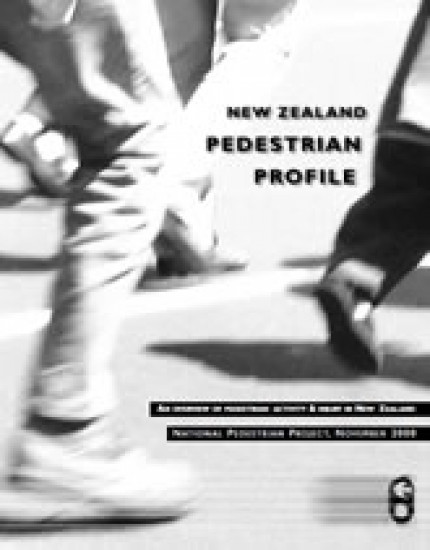This profile aims to make visible the extent and importance of pedestrian activity and injury in New Zealand. Its focus is on walking as a transport mode, and it aims to provide an accessible overview to those who plan our communities and manage our roads.

As a nation we are undertaking less journeys per capita in which walking is the sole mode of transport used. In 1997/98 this resulted in 400,000 less ‘walk only’ trips being undertaken daily by New Zealanders than was the case in 1989/90. A continued decline will have serious consequences for our transport system and our communities (see Setting the scene - the importance of walking as a transport mode).
At this point in New Zealand's transport development, the question needs to be asked: Are we content with this decline in walking (and our increasingly car-bound culture), or do we want walking to remain a safe, viable and chosen transport mode?
Taking a strategic approach to walking
In New Zealand's car-centred society, walking faces many serious challenges. Yet rarely it is approached as strategically as other modes of transport. If walking is to remain safe and viable - even flourish as a transport mode - it requires the same degree of strategic thought and attention given to the needs of private motor vehicle use, commercial travel, or public transport.
Starting from a solid base of information
For walking to be approached strategically, more information is needed on the ‘who, what, where, when and why’ of walking - and non-walking - within our regions and communities. Currently, information gathered on pedestrian activity appears limited in comparison to other modes. Similarly, information about short trips within communities and information on non-work related travel - travel in which walking trips feature highly - appears less likely to be gathered than information on travel undertaken between communities or for work purposes.
The transport question in the New Zealand Census provides an example of this. It focuses solely on the journey to work - less than a fifth of all household travel trips. It then asks only for the main way in which respondents travelled (i.e. the mode that involved the longest time), with the result that the question fails to capture the pedestrian activity of commuters who may walk significant distances to or from a bus stop, or from where they park their cars to their place of work.
Only with good information can appropriate objectives be set regarding the level and type of walking activity desired in our communities, and realistic strategies developed to enable these to be achieved.
Ensuring the ‘walkability’ of our communities
Maintaining and enhancing the ‘walkability’ of our communities is at the heart of ensuring a healthy future for walking as a transport mode. ‘Walkable’ communities have safe, direct/time efficient and pleasant walking environments, as well as destinations within walking distance. If any one of these four elements is missing, walking is less likely to be a transport mode of choice - no matter how much it is promoted as a transport mode.
Creating communities and road environments that work for pedestrians as well as motor vehicles requires moving pedestrians from the periphery to the centre of our urban planning and road management decision making.
It may also require a shift in the way we approach pedestrian safety. The overall goal of a ‘walkable community’ model is safe mobility for pedestrians, with safety addressed within a context of improving access for pedestrians. In other words, rather than simply looking at reducing pedestrian crashes, safety thinking becomes focused on improving access for pedestrians within our communities, doing this in the safest way possible.
Creating walkable road environments is cost effective in comparison to other transport modes. For less than the cost of building a single kilometre of motorway, it is possible to achieve a safe, direct and pleasant road environment for pedestrians within an existing urban community of 50,000 people*, as well as undertake the education, enforcement and promotion programmes required to further enhance safety and maximise its use.
The resulting environment will not only benefit the community's residents as they undertake pedestrian activity. It will also be conducive to cycling and public transport use, and will aid in the reduction of motor vehicle speeds, a significant contributing factor to many urban road crashes.
* Based on cost estimates for engineering and other treatments as provided by Waitakere City,Transit New Zealand, and LTSA.
The National Pedestrian Project would like to thank the Road Safety Trust for its funding support for this Profile. Also Bill Frith, Lynley Povey, Chris Hewitt, Paul Graham, Cherie Urlich and Wayne Jones (all of LTSA) for their support with data provision and analysis.